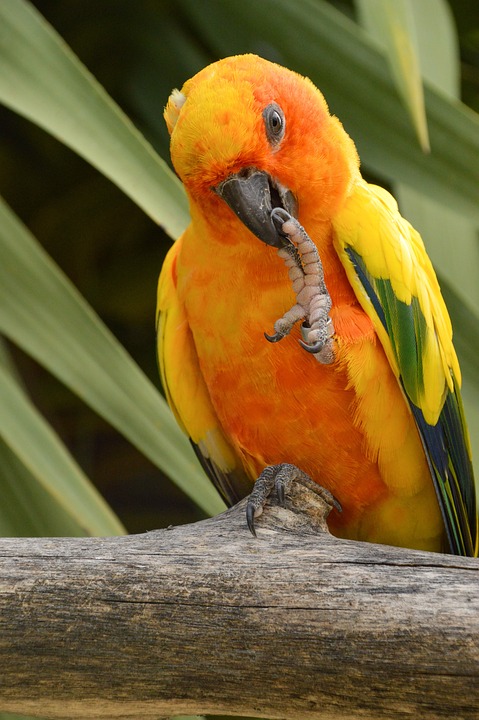Parrots, known for their vibrant colors, intelligence, and captivating personalities, have always fascinated bird enthusiasts and pet owners alike. To truly understand and appreciate these magnificent creatures, it is essential to delve into their unique behavior patterns. One notable behavior that plays a significant role in the lives of parrots is flock roosting. In this article, we will explore the intricacies of parrot flock roosting patterns and shed light on some frequently asked questions.
Flock roosting refers to the behavior of parrots coming together in large groups to rest and sleep. It is a vital aspect of their social dynamics and serves several purposes. Firstly, flock roosting provides safety in numbers. By gathering in large groups, parrots minimize the risk of predation, as there are more eyes and ears to detect potential threats. Additionally, parrots communicate and bond with each other during flock roosting, strengthening social ties and establishing hierarchies within the group. This behavior also allows for the division of responsibilities, with some parrots keeping watch while others rest.
There are several common flock roosting patterns observed among parrots. Tree roosting is the most common, where parrots gather in trees, particularly dense foliage, to spend the night. This behavior provides protection from predators and adverse weather conditions. Cliff roosting is another observed pattern, where parrots nestle into crevices and ledges on cliffs. Ground roosting, although less common, is seen in some species, where parrots sleep on the ground or in low vegetation.
Several factors influence parrot flock roosting patterns. Habitat and environment play a significant role, as different parrot species have adapted to specific habitats and may have preferred roosting locations. Predation risk also influences flock roosting patterns, with parrots choosing roosting spots that offer protection and concealment from predators. Seasonal variations, such as changes in food availability or temperature, can also impact roosting patterns. Lastly, species-specific traits, such as size and flight capabilities, can determine the type of roosting behavior exhibited.
Now, let’s address some frequently asked questions about parrot flock roosting. Firstly, not all parrot species exhibit flock roosting behavior, although it is common among many species. The decision on a roosting spot is typically made collectively, with parrots communicating and assessing the safety and suitability of potential roosting locations. While parrots generally exhibit consistent roosting patterns, they can change their roosting behavior if necessary, such as in response to changing environmental conditions or predation risk. The advantages of flock roosting for parrots include increased safety, social bonding, and the sharing of responsibilities within the group. Understanding flock roosting can benefit parrot owners by providing insights into their pet’s natural behavior and enabling them to create a suitable and stimulating environment.
In conclusion, parrot flock roosting behavior is a captivating aspect of their social dynamics, showcasing their adaptation and survival strategies. By understanding the significance of flock roosting patterns, we can gain valuable insights into parrot behavior and provide better care for these magnificent creatures. Whether you are a parrot enthusiast or a proud parrot owner, appreciating the complexities of flock roosting enhances our understanding of these intelligent birds, fostering a deeper connection with them.









